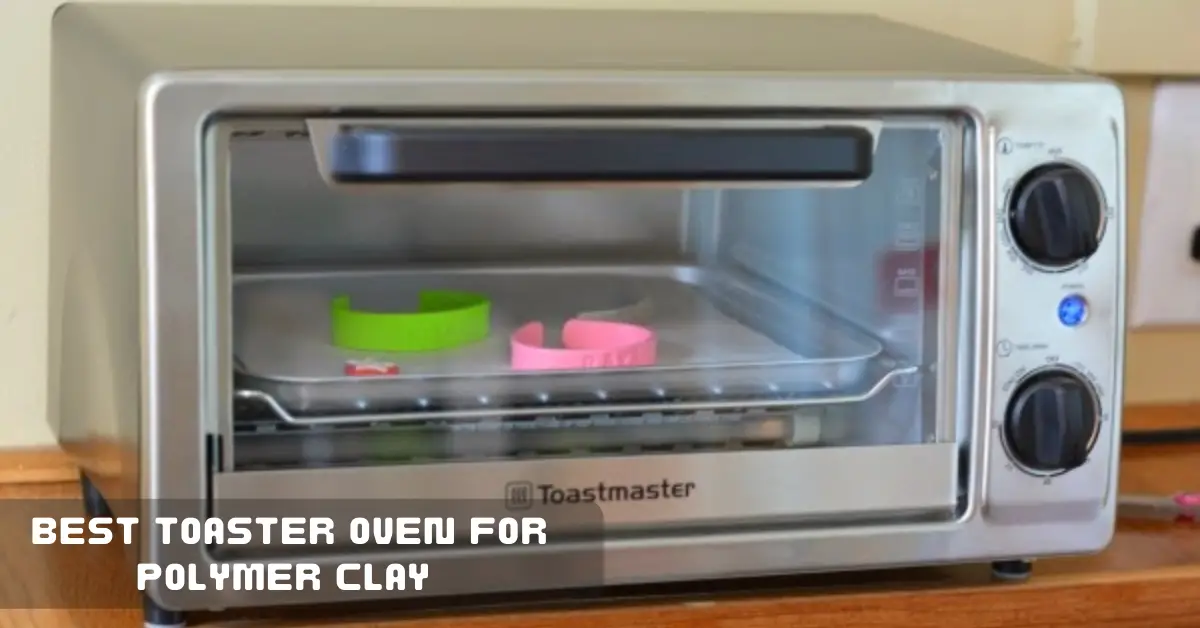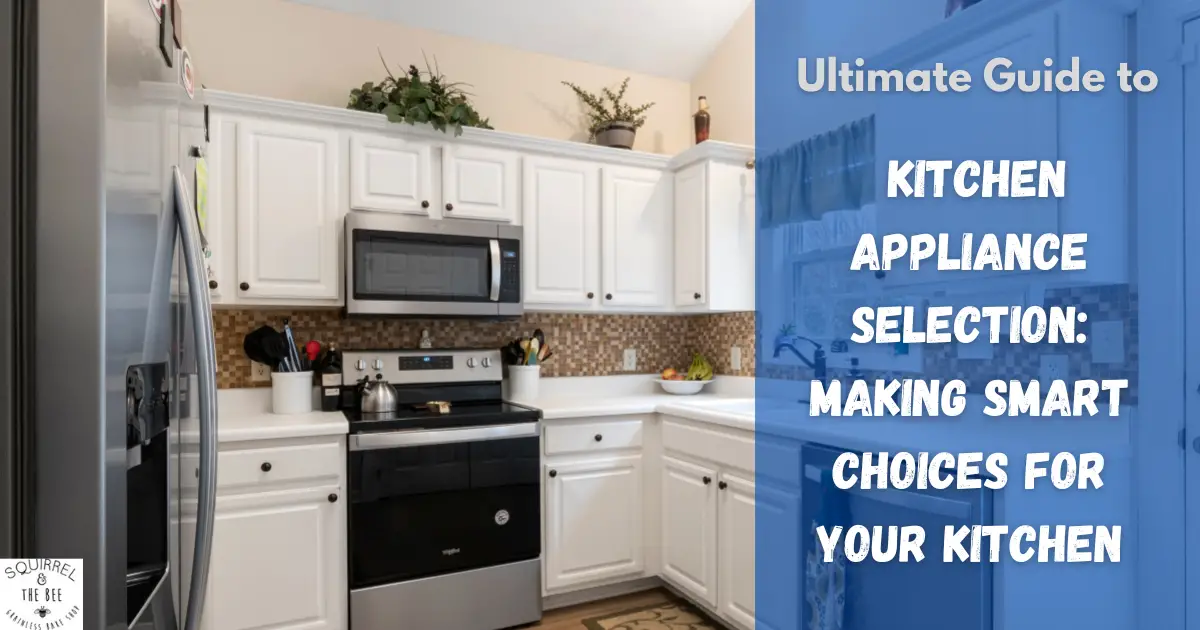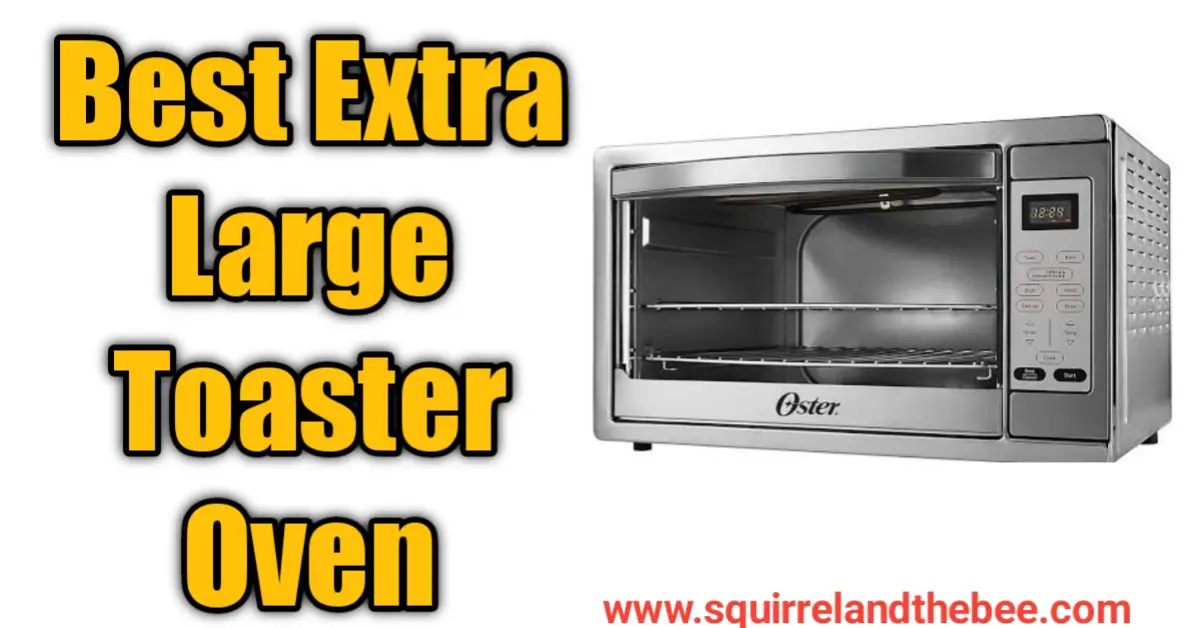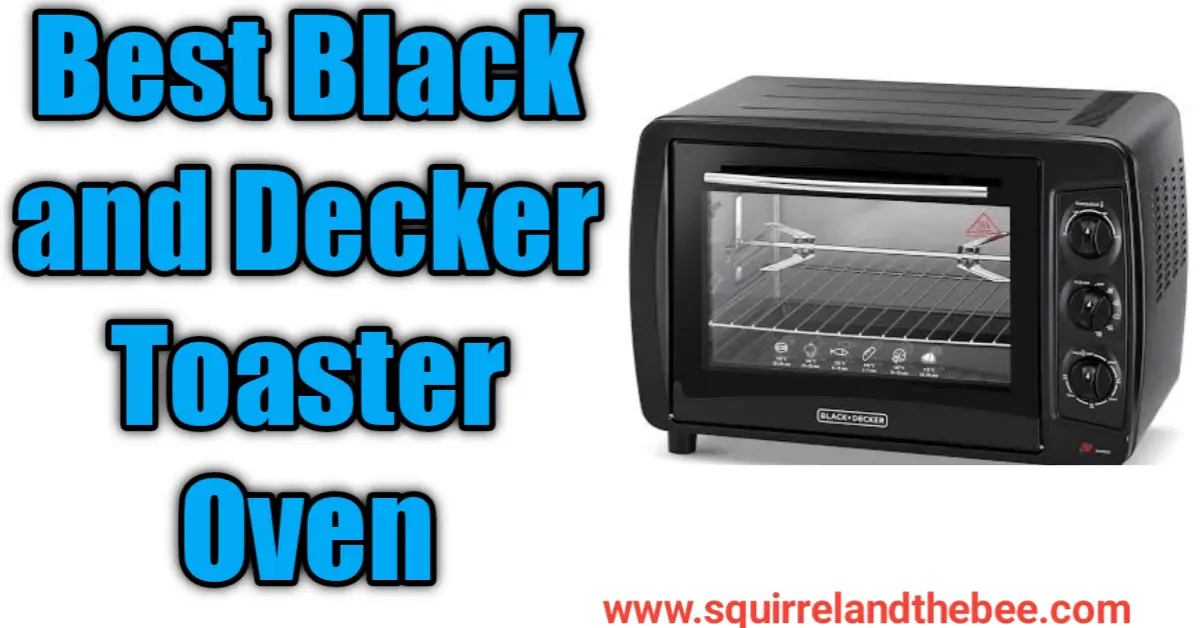Sure, you could cure your polymer clay in a conventional oven, but are you worried about how inefficient that could be? Your kitchen oven is way larger than needed, takes longer to heat, and is unlikely to give an even distribution of heat. Is it really the best option for curing polymer clay? The best toaster oven for polymer clay heats up quickly, uses technology for an even cure, and even has a timer to help with the process.
Like what you’re hearing? Then read on a bit further.
List of Best Toaster Oven for Polymer Clay
- Black & Decker TO3230SBD
- NuWave Brio 6-Quart Air Fryer
- COMFEE CFO-BB101
- Black & Decker CO6335S
- Mueller MT-175
- Dash DMTO100GBRD0
- COMFEE CFO-CC2501
- Elite Gourmet ETO-224
- Cuisinart TOB-60N
- AMACI Countertop Clay Oven
Comparison Chart of Top 10 Toaster Oven for Polymer Clay
| Image | Product | Features | Price |
|---|---|---|---|
 |
| Check Price | |
 |
| Check Price | |
 |
| Check Price | |
 |
| Check Price | |
 |
| Check Price | |
 |
| Check Price | |
 |
| Check Price | |
 |
| Check Price | |
 |
| Check Price | |
 |
| Check Price |
FAQ
Can I Bake Polymer Clay In A Toaster Oven?
Baking polymer clay inside toaster ovens can be very convenient. Usually, they’re readily available at home and are fairly easy to control and monitor. They’re astonishingly similar to clay-bake ovens. But on the other hand, the smaller ovens tend to overheat due to temperature spikes. So, using an oven thermometer is key. Don’t forget to check the oven temperature from time to time to ensure that your clay creation isn’t burning.
Is It Safe To Bake Polymer Clay In Your Oven?
When baked according to the correct temperatures, polymer clay doesn’t give out any toxic fumes or any residues in the oven. Even baking 10-20 degrees higher is fine as it makes the clay relatively stronger. Although when the clay is burned, hydrogen chloride gas is released. This however, slightly burns the lungs but isn’t quite toxic. If your oven has accurate temperature measurements, there isn’t much to be concerned about as polymer clay won’t burn till the temperature reaches about 350 degree Fahrenheit or 175 degree Celsius.
What Temperature Do You Bake Polymer Clay?
Conveniently, baking polymer clay doesn’t require temperatures as high as of natural clay. There’s also no need to fire it in a kiln. Just about any time you can bake your polymer clay in a home oven or toaster oven at a temperature of 275F to bake your polymer clay creation. Can you believe that you can bake cookies for an even lower temperature?
5 Best Toaster Ovens for Polymer Clay
We’re looking at toaster ovens that are usually used for cooking but repurposing them to use with polymer clay.
The first clay baking oven we are looking at comes from Black & Decker, which immediately tells you of the toaster oven’s quality.
Black & Decker are famous for their electronic appliances and are a brand trusted for the reliability and durability of every item they sell. Therefore, money invested in a Black & Decker appliance is undoubtedly money well spent.
With overall external dimensions of 21.5 x 23 x 11.2 inches, this is a toaster oven that needs little space to sit whether you decide to keep it in a kitchen to double as a cooking appliance or keep it on a bench wherever you do your crafting.
The large internal space is big enough to bake many items at once, be it beads, figurines, or some other creative endeavor.
You’ll see that the toaster oven features a temperature dial ranging between 150 and 450 degrees Fahrenheit. This will let you set the temperature as close as possible to that needed for baking your polymer clay. However, it is recommended that you use a thermometer with the toaster oven to ensure absolute accuracy with the temperature.
Finally, this toaster oven has a precision timer, so you know when your polymer is done.
- Convection oven gets up to temperature more quickly than conventional ovens
- 30-minute timer lets you start your polymer bake and leave it alone
- Large capacity oven lets you bake multiple items at once
- Large size takes an ample space
- Not easy to clean (use foil sheet)
Most toaster ovens have an Air Fry option, and while this may not be a toaster oven in name, it does everything that a toaster oven does.
The NuWave Brio 6-Quart Air Fryer is perfect for baking polymer clay.
Of all the features, we can see the way this Air Fryer heats up is ideal for anyone working with polymer clay because it provides excellent accuracy in temperature. For example, Sculpey requires a temperature of 275 degrees Fahrenheit. With a knob-based system that shows units of measurement every 50 degrees, you may be guessing where 275 sits.
With this NuWave appliance, you have a digital display that lets you adjust the temperature at 5-degree increments. This means you will hit that 275-degree mark perfectly.
Additionally, this air fryer comes with technology that is consistently checking the temperature to ensure that it sits at the figure you set. Other ovens may turn on and off, cooling down a bit and then heating up again. That could be detrimental to what you are attempting to do.
Finally, you can use this appliance without worrying too much about getting a burn injury, as it will automatically shut off as soon as the basket has been removed. This means the heat goes immediately and will not start up again. This, perhaps, makes it an excellent appliance to use with kids.
- Technology to ensure a consistent temperature
- Accurate temperature adjustment with 5-degree increments
- Safety features make chances of burning yourself slim
- Coating on the frying basket is chipping and coming off
- Cleaning the wire basket that goes in the fryer can be difficult
So, you’re looking at baking clay in an oven and are genuinely unlikely to do much complex additional cooking in it? Maybe the occasional slice of toast, or reheating a bit of pizza every now and then.
If that is the case, then there’s no need to go all out, splashing the budget on a toaster oven with multiple cooking functions. Best to just keep things simple with a no-frills, entry-level toaster oven.
This toaster oven from COMFEE fulfills the needs of anyone working with polymer clay. It is a compact oven with minimal features that is very easy to use.
In terms of controls, you have two knobs to worry about. One that can adjust the temperature between 150 and 450 degrees Fahrenheit, and one that will set the timer up to 30-minutes, with the option to just keep the oven on if working with items that are more than a quarter of an inch thick.
At 1000 watts, this toaster oven uses a lot less power than other appliances we’ve looked at so far, and that may be a consideration when deciding which appliance to buy, as it could potentially save you money on your electricity bill.
- Compact design goes nicely on even the most cluttered work surface
- Easy to operate two dial system
- 30-minute with stay-on feature lets you cure larger polymer items
- Not for toast (high temp.)
- Dial is hard to read
We have a second Black & Decker toaster oven for you now. As we said before, the Black & Decker name is such that it has become a symbol of excellence. You know that you are getting quality the second you hear the brand name. It’s not just us saying it. Black & Decker Toaster ovens have been named the number 1 Toaster ovens in the USA by multiple awarding bodies.
So what’s different about this toaster oven?
For a start, it is larger than the previous toaster oven we looked at from this company with dimensions of 22.8×13.4×15.5 inches.
An advantage of this toaster oven is that it uses buttons to adjust the temperature between 150 degrees Fahrenheit to 450 degrees Fahrenheit. This is much more precise and easy to adjust to the polymer clay temperature than using a dial system, which has a lot of guesswork about it.
Like most Black & Decker toaster ovens, this one uses convection technology that not only gets the oven hotter more efficiently but also ensures a more even circulation of heat during the baking process.
With this toaster oven, you can feel confident that your clay is getting the temperatures it needs and that the temperature is consistent all the way through the bake.
- The extra-large interior allows you to bake more items in one go
- Made from durable stainless steel
- Button system lets you get more accurate temperatures
- The LCD isn’t backlit, so it is difficult to read the settings.
- The timer alert sound is too quiet.
The final toaster oven for baking clay we’re reviewing today comes all the way from Europe and is the top brand for electronic appliances in that region.
Mueller offers a quality toaster oven that will ensure you get fantastic heating to bake your polymer clay while not adding a load of extra expense in the form of your electricity bill.
In terms of energy efficiency, this toaster oven is meant to use up to 60% less energy than conventional ovens, which, with frequent use, will add up to a lot in the way of savings.
This is a compact toaster oven coming in at 17x14x11 inches, thus it will not take up much space wherever you are doing your polymer clay work.
The Mueller oven uses a dial-based system to adjust your temperature between 150 to 450 degrees Fahrenheit. The main decision you have is really between whether you prefer the dial system or a button system. This can be based on personal preference for aesthetics or how easy you find each to use.
A 30-minute timer is included as one of the toaster oven’s features, which is perfect for items a quarter of an inch thick or less. For larger items, there is also a stay-on option that can be utilized.
- Temperature dial adjusts between 150 and 450 degrees Fahrenheit
- Large clear glass door lets you keep an eye on how your polymer is doing
- 1100 Watts makes this powerful yet energy-efficient
- Others say that the door doesn’t shut tightly enough, causing some heating problems.
- Some customer reviews said that just weren’t happy about the Mueller 4 slice toaster oven.
Toaster Oven for Polymer Clay Buying Guide
You’re searching for the best oven for polymer clay, and in a crowded marketplace full of ovens from numerous different sources, it can be overwhelming to find an oven that matches your needs.
In this section, we go over some of the features of toaster ovens you should be considering as you decide which one to purchase.
1. Size
If you’re making polymer beads, you don’t require a giant oven, height-wise, to get these done. However, other larger items may require the extra space.
The toaster ovens we’ve looked at range from small compact ovens to larger ovens with a deep interior.
You should consider carefully whether you need to go for the larger oven. Don’t forget; these will take longer to heat up and require more energy to maintain a temperature. Therefore, you could be wasting energy unnecessarily, and one of the smaller ovens will suffice.
2. Controls
There are two types of controls of toaster ovens. One is a dial-based control, where you twist to get the temperature you want, and the other one is button-based. Which one you choose will depend on several factors.
Dials are much easier to maneuver for older people who have issues with their hands and fingers. Some people also have a personal preference as they prefer the aesthetic look of a knob.
However, these dials, with a range of 150 to 450 degrees Fahrenheit, can be difficult to judge when looking for an exact temperature.
We think it is much easier to go with a button set up or dials that adjust a digital display in small increments. This will mean you will get an exact 275 degrees Fahrenheit rather than something that is around that figure.
3. Heating Type
Convection ovens are great because they are energy efficient. They heat up much more quickly than regular ovens, and they ensure that heat is distributed evenly. This creates the perfect set of circumstances to ensure your polymer clay gets cured as well as it can be.
Bottom Line
We come to the end of our look at the best toaster oven for baking polymer clay.
Without a shadow of a doubt, toaster ovens are the best way to cure your polymer clay, whether you are making beads to add to bracelets or figurines to go on someone’s mantlepiece.
All the toaster ovens we have looked at offer the temperature needed to cure polymer clay and distribute heat evenly to ensure the best curing process. Whichever one you purchase, you’re bound to fall in love with it!
FAQs
Q1. What are the best features to look for when purchasing a toaster oven for polymer clay?
A1. The best features to look for when purchasing a toaster oven for polymer clay include a convection oven, a timer, and a temperature control.
Q2. What are the benefits of using a toaster oven for polymer clay?
A2. The benefits of using a toaster oven for polymer clay include evenly cooking the clay, preventing the clay from burning, and the ability to set a timer to monitor the cooking time.
Q3. What are some tips for using a toaster oven for polymer clay?
A3. Some tips for using a toaster oven for polymer clay include using a baking sheet to prevent the clay from sticking to the oven, using an oven thermometer to ensure the correct temperature is reached, and using a fan to help circulate the heat.




